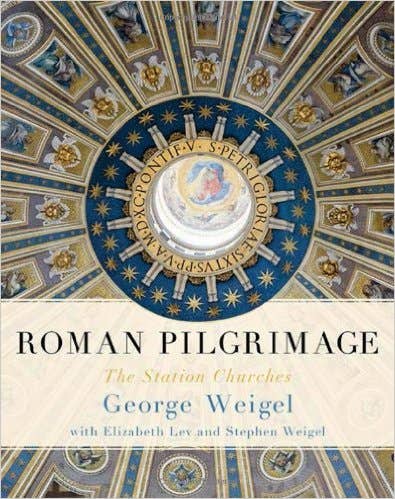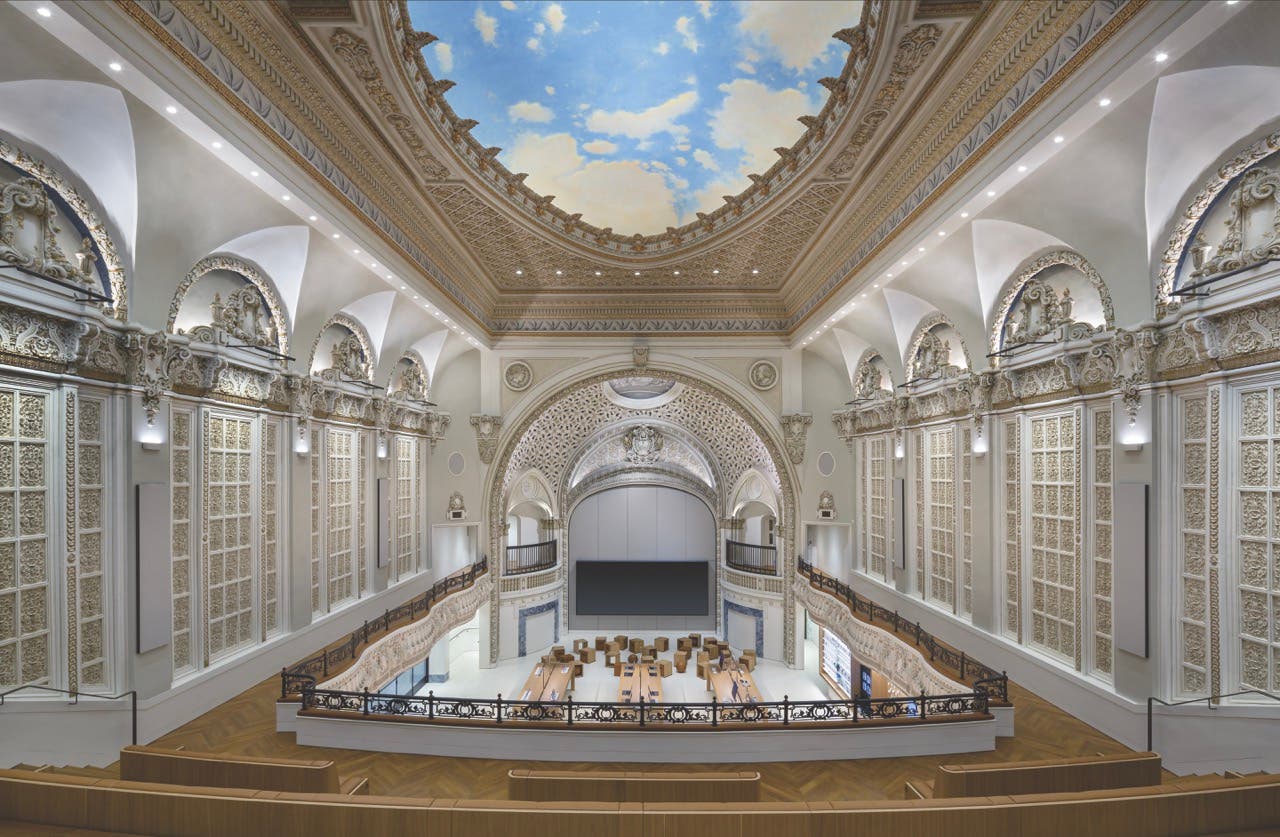
Features
Roman Pilgrimage: The Station Churches
Roman Pilgrimage: The Station Churches
By George Weigel and Elizabeth Lev
Ignatius Press; hardcover; 464 pages
ISBN: 978-0-46502-769-9
In our peculiarly secular age, it is easy to be unaware that most of mankind’s art has been created in service to God. Of course, this should be obvious, since our word culture springs from the word cult, and worshipping god is what cults do. But if it is acknowledged that religion, since time immemorial, has been the very heart of culture, we are forced to conclude that most of all that has been written or said about art for the past couple of centuries, inasmuch as it ignores religion, is flawed by not just a large lacunae at its center, but rather a whole universe of meaning left unexplored.
Yet here, at what some have termed the end of the modern era, George Weigel ‘s book, Roman Pilgrimage boldly launches an exploration into what, for most post moderns, is terra incognito, a place where art, architecture, religion and time meet and intimately intertwine – the stational pilgrimage churches of Rome.
And there could be no better cicerone than Weigel to lead us through this foreign land of mystery. He is well known as a leading theologian, papal biographer, Catholic apologist, educator, Senior Vatican Analyst for NBC, and author of numerous books, including the international best-selling two-volume biography of St. John Paul II. But less well known, is his deep understanding of the philosophies that underlie modern architecture vs traditional architecture, as evident in his brief but insightful musings on the vacuity of the modern architecture of Paris vs the profound beauty of Notre Dame de Paris, in his book The Cube and the Cathedral.
For this expedition, Weigel has assembled a masterful crew of complementary skills, namely Elizabeth Lev, noted authority on Roman art and architecture, and his son and talented photographer, Stephen Weigel. A long-time friend of the author, Lev, in addition to her encyclopedic knowledge of Rome’s art and history, understands the religious aspects of her subject, and can ably communicate it. The photographs by Stephen Weigel capture exquisite details and little known views, to artfully convey the sense of wonder intrinsic to any voyage of discovery.
The book is structured about the Christian 40-day penitential season of Lent, and the following eight day Easter Octave. The Roman station church Lenten pilgrimage, dating back to the early fourth century, proscribes a visit each day to a different specific one of the 40-plus “station churches,” each a resting place of a martyr and/or relics. The purpose of Lent, as the author puts it, is to relive the “adventure of God in salvation history.” Thus the pilgrimage is fundamentally an inward spiritual journey.
Yet, as one traverses the city of Rome and these churches, the many layers of all these revealing the rise and fall of scores hundreds of princes and principalities and centuries of art and architectural change, make this a journey through time as well. The common ground between these two journeys is beauty. Citing the Swiss theologian Hans Urs Von Balthasar, Weigel notes that if “beauty, the often forgotten transcendental, is, in late modernity uniquely magnetic in drawing us to experience anew the good and the true, the transcendentals often obscured by modernity – then beauty can be a unique pathway to God.”
The book presents for each day of Lent and the Easter Octave the scripture reading for the Mass and Daily Office, followed by a mediation on these and the saints or saints associated with that day’s station church. These meditations are of such theological erudition and profound thought, and in such pellucid prose that the book is experienced as much on a religious level as it is on an aesthetic one, much to the benefit of both.
These inspired meditations are followed by Ms. Lev’s incisive observations on the art of each station, and its correlative history. The art and architecture, in turn, is illustrated by Stephen Weigel’s exceptionally discerning photography. For the latter, it’s regrettable that, perhaps due to budget concerns, that the printing was on matt rather than a coated paper, thus rendering the black-and-white photos less crisp than they would have been otherwise. On the other hand, to have a handsome hardcover book of such high quality content and copious heft for under $40 was perhaps worth this concession.
Furthermore, with the book at this price, which includes helpful maps of Rome (one for each week, showing the designated churches of that day, and the marked pedestrian routes between them) there is no excuse for this book not being in the library, and Roman holiday suitcase, of every serious student of Rome. But since the book weighs in at two pounds, it should be pointed out that for the traveler it is also available as an e-book (with ALL the photos in color), ready to be pulled up on one’s smart phone in an instant – along with the address and rating of a nearby trattoria.
There have been, and are, many guidebooks to the pilgrimage churches of Rome. Their problem has been, that at least since the 19th-century Aesthetic Movement, our leading cultural lights have inclined to make art a religion, and the artist into a kind of god. This has been analogous to the theological mistake of worshipping the created rather than the creator.
In Roman Pilgrimage, the Weigels and Lev have corrected this problem, and in doing so have restored two millennia of Christian art to its full meaning and purpose. It is this deep, more transcendental dimension of art – the cult aspect of culture – that this book brings to light. In doing so, these perspicacious explorers have done a singular and invaluable service for the cultural life of our times.









